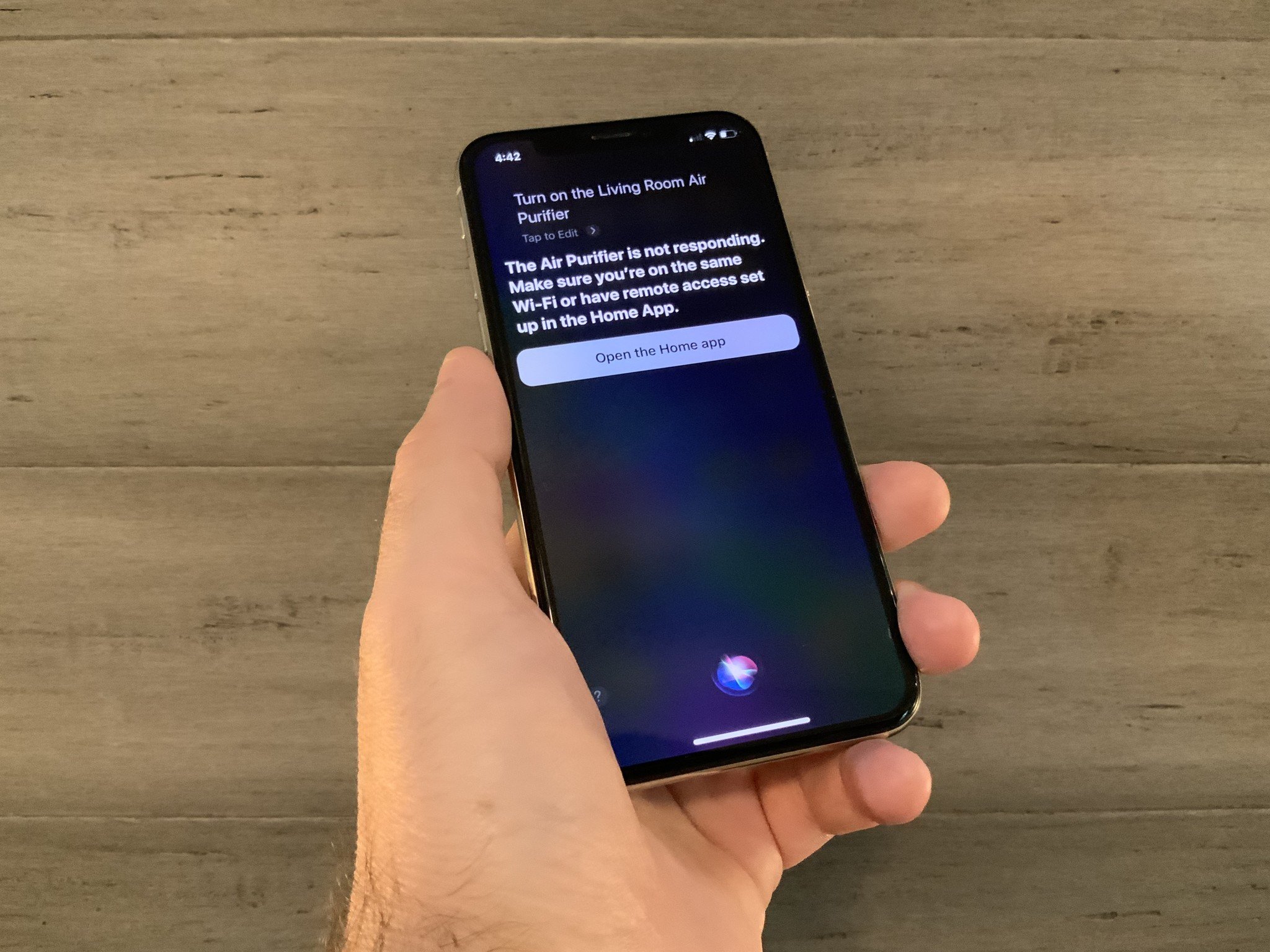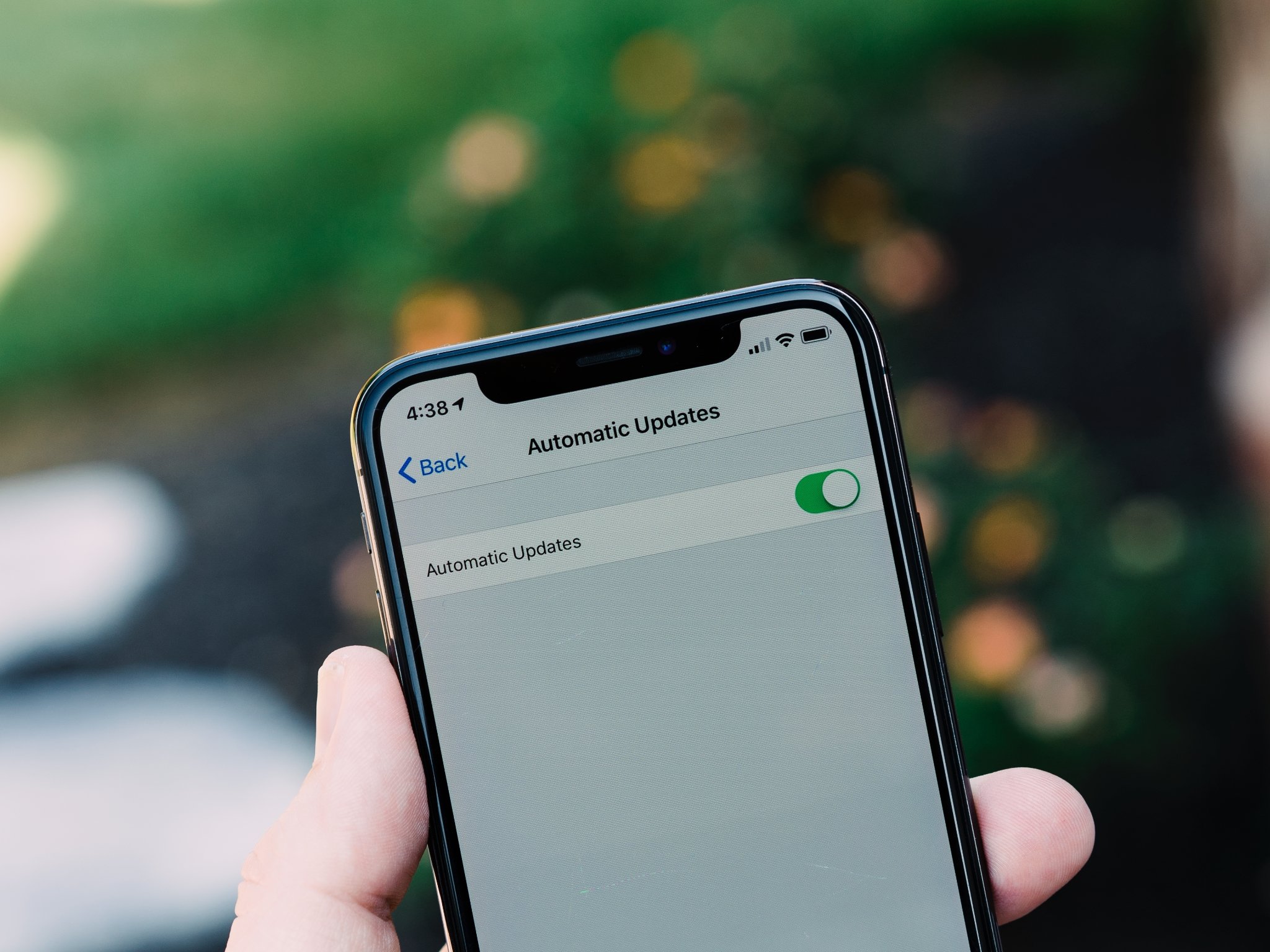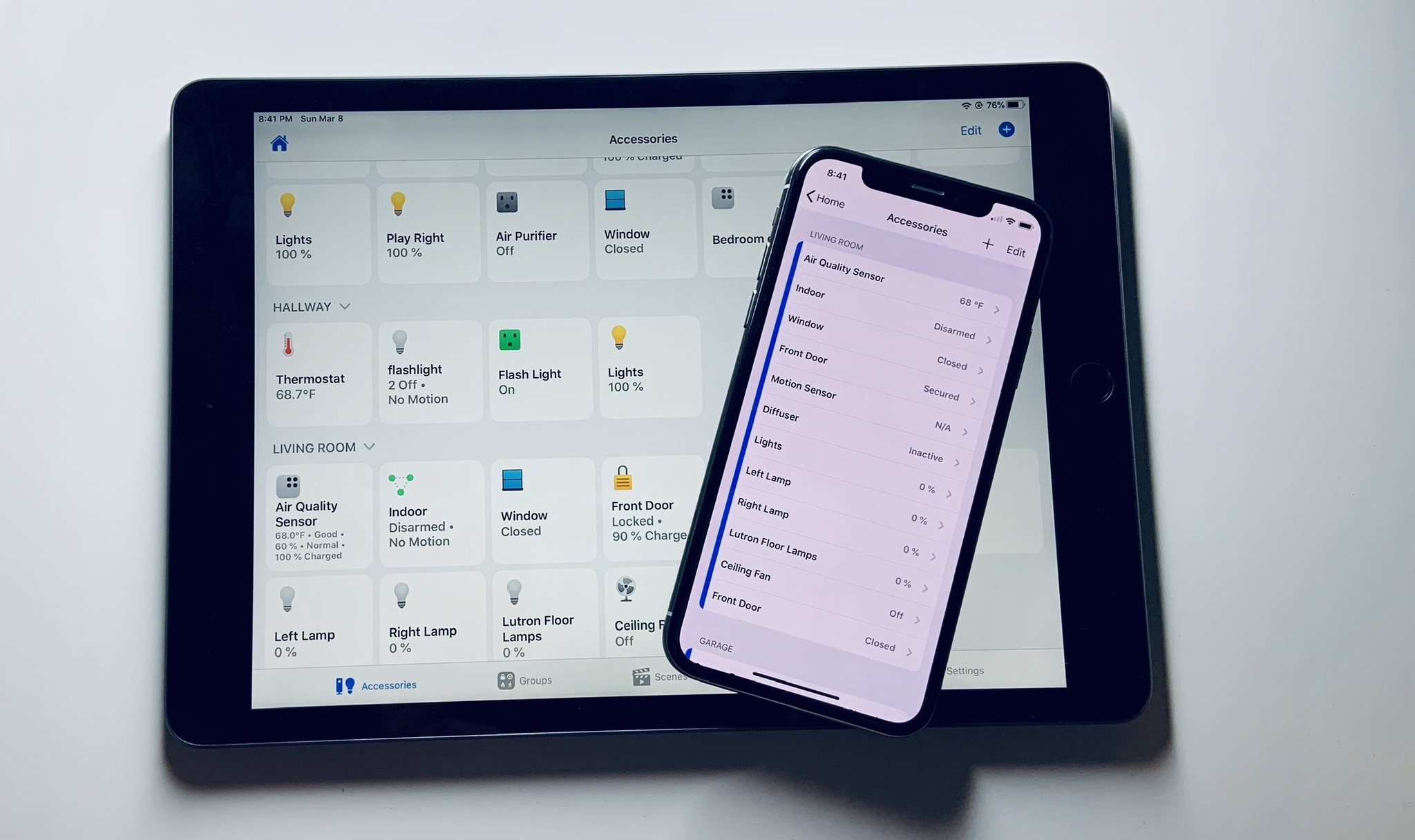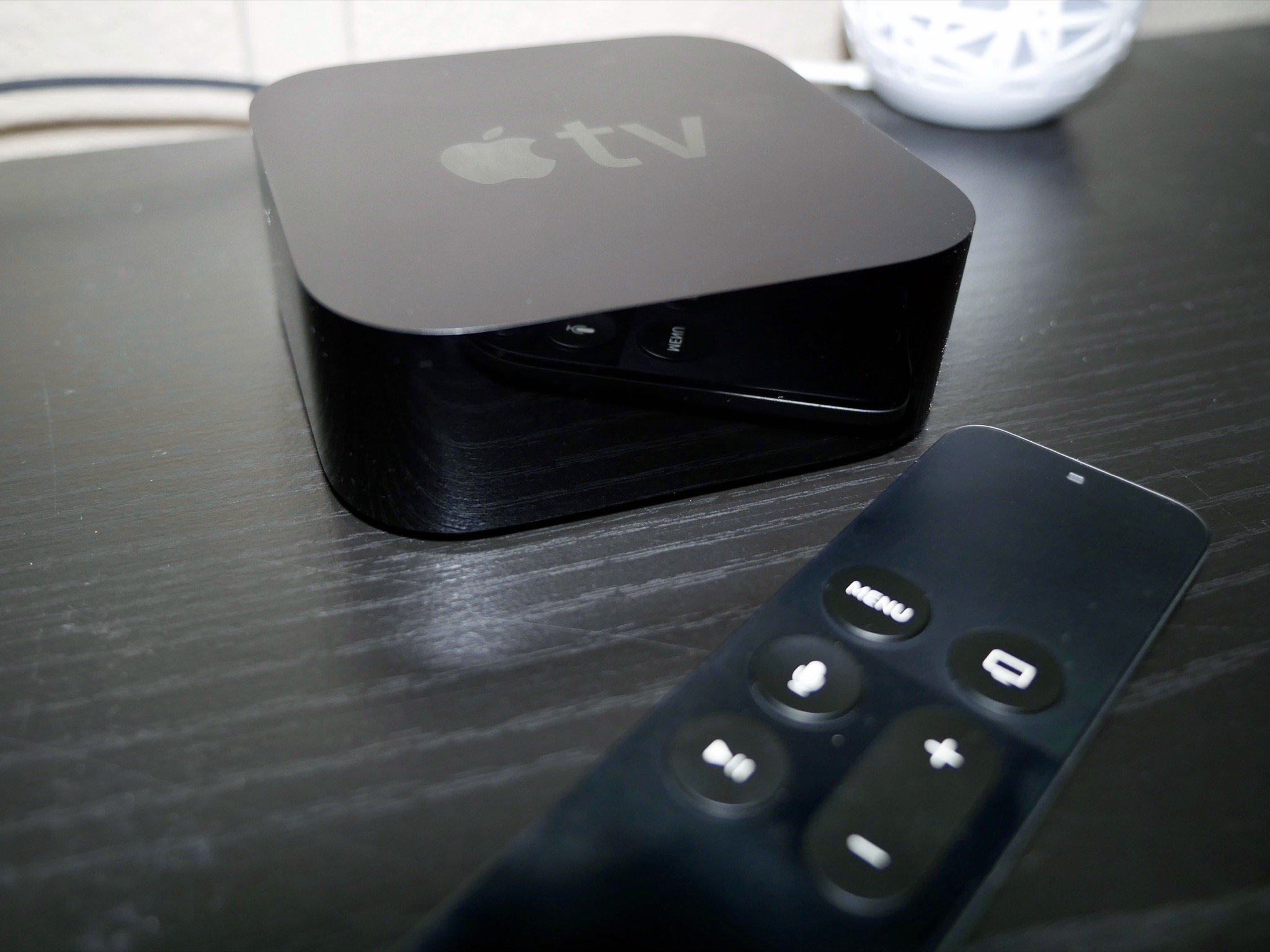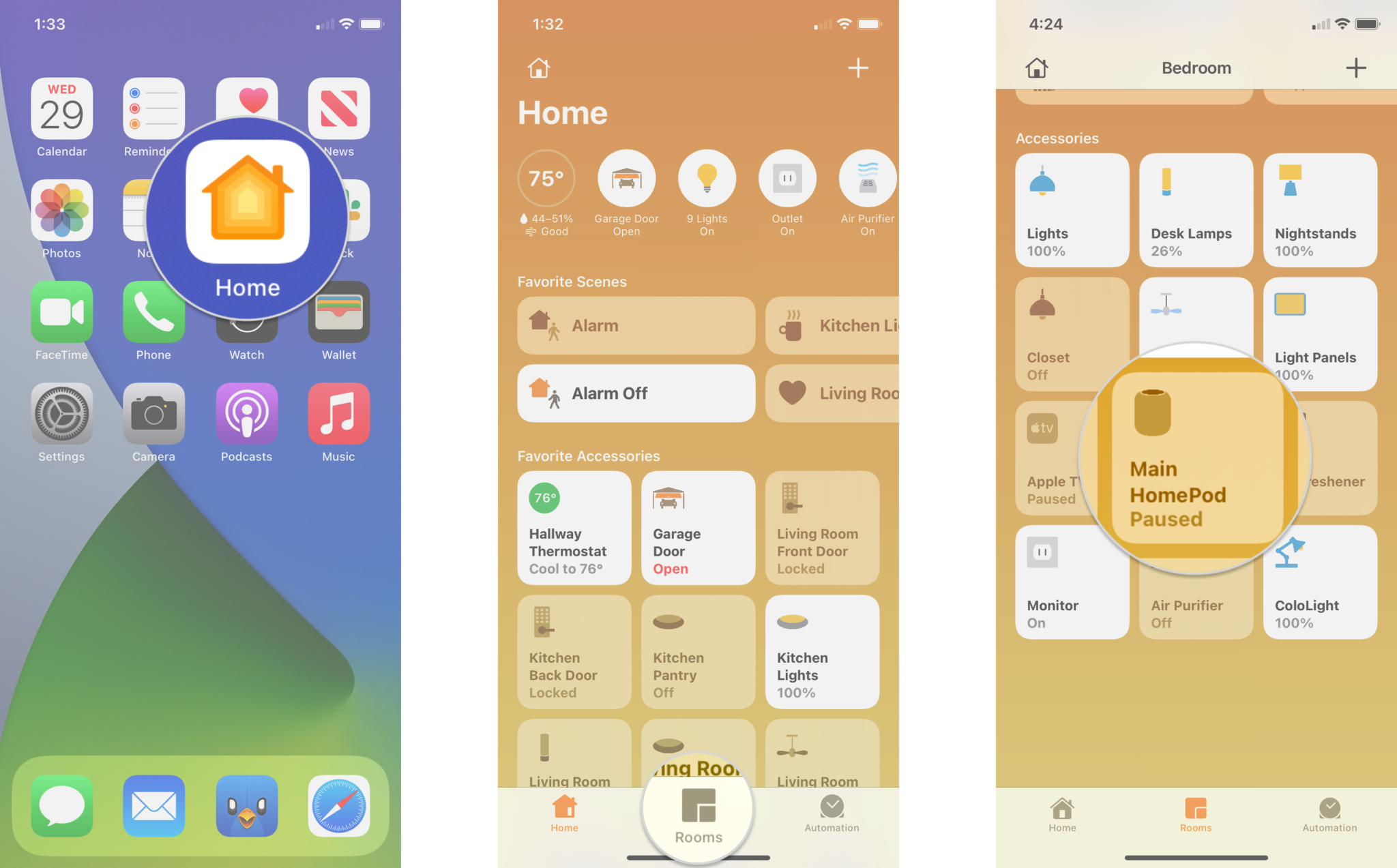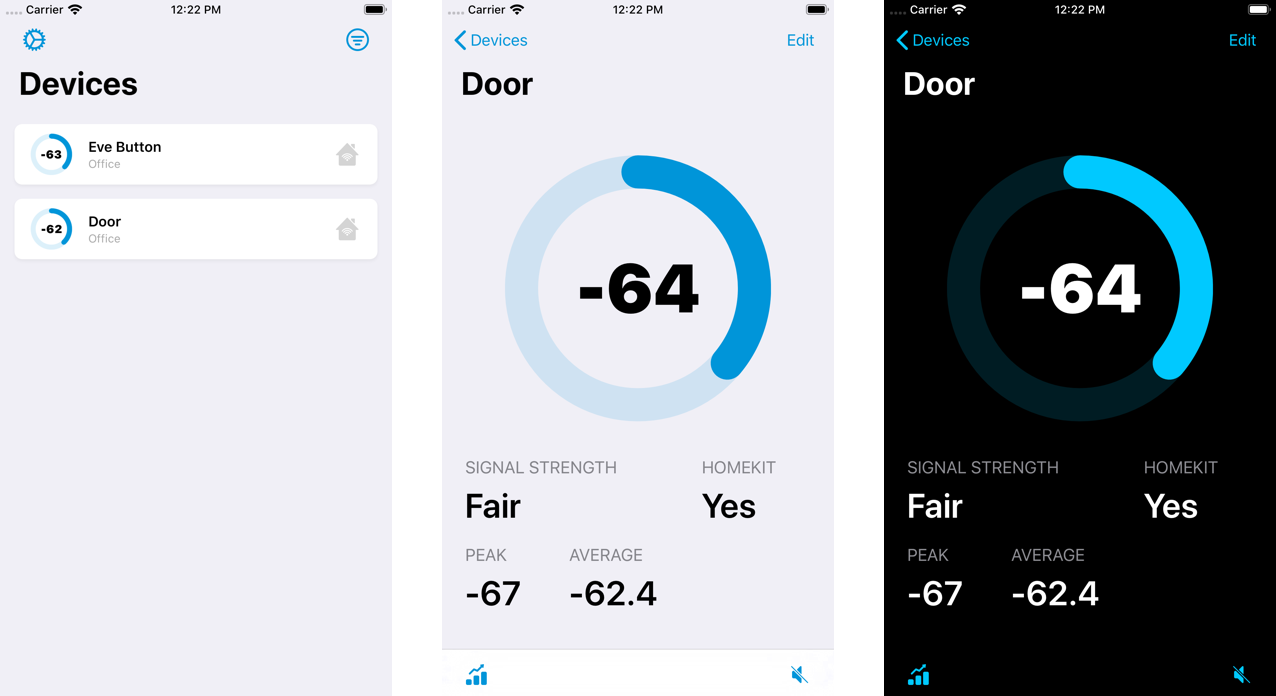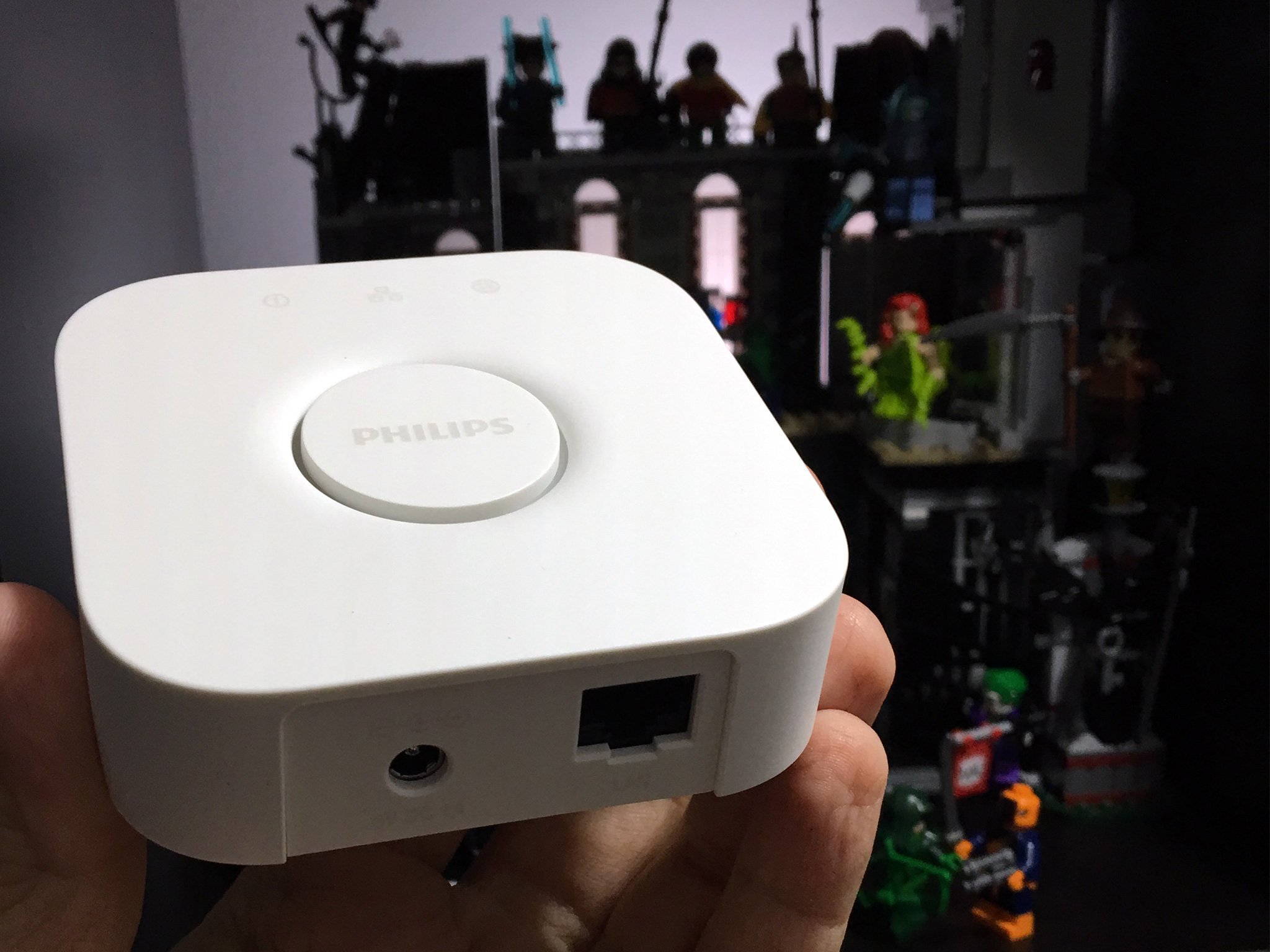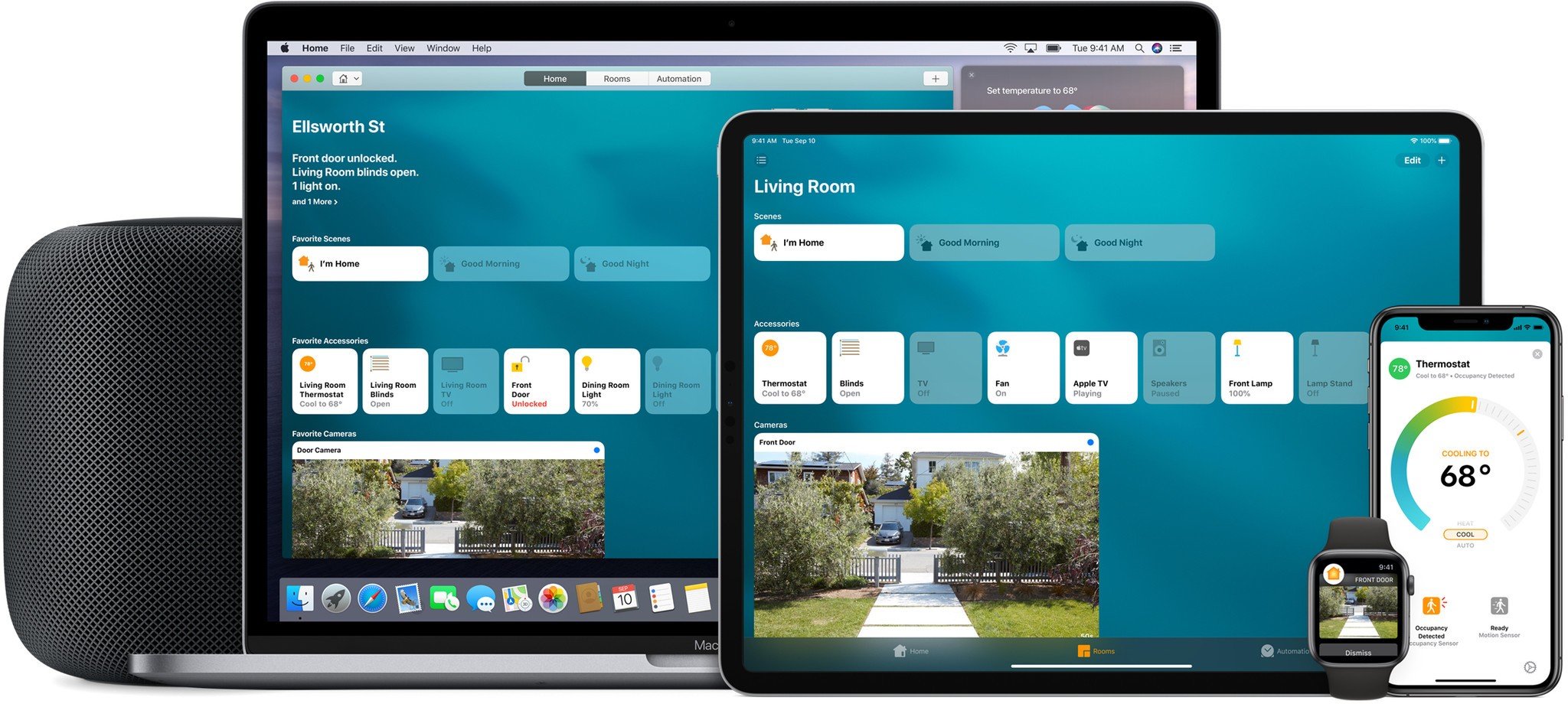Have a HomeKit accessory that is showing No Response? Here’s the fix!
- aug
- 26
- Posted by Michael
- Posted in Okategoriserade
Fix that pesky HomeKit accessory with a few simple steps.
Controlling smart home accessories via the Home app or voice with Siri is absolutely magical, but that magic can quickly turn to frustration if your accessory suddenly comes down with a case of the dreaded No Response error. No Response status not only means that you lose the ability to control your accessories, but it also impacts automations and scenes, which can really disrupt a home.
Since HomeKit relies on a variety of factors and involves multiple devices, tracking down an exact fix for the No Response issue can be a little tricky. Sometimes it's a spotty wireless connection; the next day, it could merely be an issue with the Home app requiring a reboot. With a little patience, you can bring that accessory back to life, just follow the steps below to get started.
First things first
Before we dive into the deep stuff, there are a few simple settings that you should check on your iOS device. These include ensuring that your device is connected to your Wi-Fi network at home, and checking to see if Bluetooth is on.
How to turn off WiFi or Bluetooth on iPhone and iPad
Next, make sure that your iPhone is signed into your iCloud account. You can do this by simply going into the Settings app and checking to see if your name is listed at the top. If it isn't, then check out our guide below on signing in.
How to set up and customize iCloud on your iPhone, iPad, and Mac
Finally, make sure that you are running the latest version of iOS or macOS, as well as on your HomeKit hub, like the Apple TV or HomePod. For more details on updating, check out the guides below.
How to update your iPhone and iPad: The ultimate guide
How to download and install macOS on your Mac
How to download and install tvOS on your Apple TV
How to install software updates for your HomePod
Narrow it down
Sometimes, a HomeKit accessory may show the No Response message even though it is actually connected to your home network. To narrow it down to either an accessory issue or a Home app issue, you can check the device-specific app for your accessory to see if you can control it from there. If you can, then you can turn your attention to troubleshooting HomeKit.
If your accessory is available in another app, you can check for firmware updates that may address the problem, or you can refer to HomeKit specific steps provided by the manufacturer.
Home or away
If your HomeKit accessory only shows No Response when you are not at home, then you may need a HomeKit hub. HomeKit hubs bridge the gap between the accessory and the internet, allowing you to access your gear while out and about while also letting you create automations.
There are currently three types of HomeKit hubs that are available: the Apple TV (4th generation or later), HomePod, and iPad (running the latest version of iOS). HomeKit hubs, even in standby, will handle all of the connections in the background and are generally enabled automatically when you sign into your iCloud account during the setup process for the device.
If you have one of these devices in your home already, you can check their HomeKit status in the Home app on iOS. An active HomeKit hub will be displayed as Connected in the Home app, and if you have other hubs in the home, they will show as Standby. If your hub isn't showing Connected or isn't displayed at all, then you will have to enable it on that specific device. Here are the steps to check out your hub's status.
How to view the status of your current HomeKit Hub
Reboot all the things
As with most problems, sometimes a simple reboot is all that it takes to get things back up and running. For HomeKit troubleshooting, rebooting your HomeKit hub, iOS device, and even the accessory itself is one of the quickest and easiest ways to make an unresponsive accessory available again.
How to reboot or reset your iPhone and iPad
Rebooting a HomeKit accessory usually requires just unplugged it from the wall, or removing its batteries. In some cases, you can also use the associated app if it is connected to your home network and if it can be seen by the app.
Rebooting an Apple TV requires either unplugging it, using the on-device menus, or using a combination of buttons on the Siri remote.
How to restart or put Apple TV to sleep with Siri Remote
For the HomePod, you can simply unplug it, or you can use the Home app. Restarting it via the Home app can be a little dangerous, though, as you will be presented for options to restart or reset the HomePod, so make sure that you pay attention before tapping. Here's how:
- Launch the Home app.
- Tap Rooms.
Swipe to the left or right to locate the Room that your HomePod is in and then tap and hold on the HomePod.
- Tap the Settings icon.
- Swipe down and tap Reset HomePod
Tap Restart HomePod.
- Make sure that you tap the restart option. If you tap the Remove Accessory option, your HomePod will be restored to factory settings.
- Restarting your HomePod will take a few moments, and it will not be available for voice commands during this time
- If your HomePod is the acting HomeKit hub in the home, you will temporarily lose access to your accessories
Going the distance
The vast majority of HomeKit accessories on the market use wireless radios to communicate to your home network. Common wireless types are Wi-Fi, Bluetooth, ZigBee, and RF, all of which are limited in their maximum range. If you have just a single accessory that comes and goes, then it may be a victim of a spotty signal.
Fixing the issue can be as simple as moving the accessory to a different location, or relocating your HomeKit hub. There are a few different tools that you can use to help diagnose an accessory's connection, most of which you may already have.
For Wi-Fi connections, check the app or web portal that you use for managing your router. Most modern routers will display signal strength as an easy to read icon or as a description like Excellent. Some routers will display the strength in numerical form, such as -50 dBm, and the lower the number, the better your signal is. If your signal is at or above -70 dBm, then you may experience connectivity issues.
If your signal isn't strong and if you cannot move your accessories, hub, or router, then you may want to look into a mesh Wi-Fi router, like the popular eero line. These routers have multiple access points spread throughout the home to extend range, and it also supports HomeKit Secure Router features
For Bluetooth accessories, signal strength can be also be checked, but to do so, you will more than likely need a third-party HomeKit app. We recommend the HomeScan for HomeKit app, as it is tailored for HomeKit, and comes with a handy companion Apple Watch app that makes diagnosing a connection even easier.
The HomeScan app will display strength in numerical form, and just like with Wi-Fi connections, a signal around -70 dBm or above can cause inconsistent performance. If you have a HomeKit hub in your home, you will need to ensure that you measure strength in relation to where your HomeKit hub is. You can do this by setting your iPhone on or near your Apple TV, iPad, or HomePod, then using the Apple Watch while standing near your HomeKit accessory.
ZigBee and RF accessories communicate to a dedicated hub, and as such, signal strength, if available, will be reported through the accompanying app. The most popular brand that uses ZigBee is Philips Hue, which uses it for its line of light bulbs and lamps, and for RF, Lutron's Caseta line is one of the most well-known.
In most cases, these types of accessories utilize a form of mesh networking that extends coverage in the home by allowing accessories to connect to each other. However, these radios are generally low power, which means that they have a shorter range, and are affected by walls and materials within the home. If you cannot move your accessories or the dedicated hub, then adding a brand-specific range extender, or even just another accessory in-between may help. You can also try changing the hub's channel that it operates on if the manufacturer's app supports it.
The nuclear option
If all else fails, resetting your HomeKit accessory, or HomeKit home may be the only solution. When resetting an accessory, it will revert back to the original settings, removing it from HomeKit and your home network. This process varies, but typical methods include holding a button on-device for a few seconds or removing it from the manufacturer's app. Once it is reset, you will need to add it back to your network following the same process as before to get it connected.
How to set up your HomeKit accessories
Resetting your HomeKit home should be the absolute last step that you attempt as it will not only remove the problematic accessory, but it will remove all of your accessories, scenes, and automations. Since there is no backup and restore process provided by the Home app, this option means that you will need to set up everything again, starting from scratch, so it is the most time-consuming. There are a few third-party apps, like Controller for HomeKit, that can back up scenes and automations, but it will not restore the actual accessories.
How to remove a home from the Home app
Still seeing No Response?
Still having issues with your accessory showing No Response? Have some troubleshooting tips that you use? Let us know in the comments below!
Senaste inläggen
- Så snabbt är Apples nya M4-chipp
- Final Cut Pro får nya möjligheter för videoproduktion med Live Multicam på Ipad
- Hands-on: Apple Pencil Pro — so good, it might have even won Steve Jobs over
- Hands-on: iPad Air 2024 — the best iPad for most people gets a big screen boost
- Tim Cook was wearing ’Made on iPad’ Nike shoes for the ’Let Loose’ event
Senaste kommentarer
Arkiv
- maj 2024
- april 2024
- mars 2024
- februari 2024
- januari 2024
- december 2023
- november 2023
- oktober 2023
- september 2023
- augusti 2023
- juli 2023
- juni 2023
- maj 2023
- april 2023
- mars 2023
- februari 2023
- januari 2023
- december 2022
- november 2022
- oktober 2022
- september 2022
- augusti 2022
- juli 2022
- juni 2022
- maj 2022
- april 2022
- mars 2022
- februari 2022
- april 2021
- mars 2021
- januari 2021
- december 2020
- november 2020
- oktober 2020
- september 2020
- augusti 2020
- juli 2020
- juni 2020
- maj 2020
- april 2020
- mars 2020
- februari 2020
- januari 2020
- december 2019
- november 2019
- oktober 2019
- september 2019
- augusti 2019
- juli 2019
- juni 2019
- maj 2019
- april 2019
- mars 2019
- februari 2019
- januari 2019
- december 2018
- november 2018
- oktober 2018
- september 2018
- augusti 2018
- juli 2018
- juni 2018
- maj 2018
- april 2018
- mars 2018
- februari 2018
- januari 2018
- december 2017
- november 2017
- oktober 2017
- september 2017
- augusti 2017
- juli 2017
- juni 2017
- maj 2017
- april 2017
- mars 2017
- februari 2017
- januari 2017
- december 2016
- november 2016
- oktober 2016
- september 2016
- augusti 2016
- juli 2016
- juni 2016
- maj 2016
- april 2016
- mars 2016
- februari 2016
- januari 2016
- december 2015
- november 2015
- oktober 2015
- september 2015
- augusti 2015
- juli 2015
- juni 2015
- maj 2015
- april 2015
- mars 2015
- februari 2015
- januari 2015
- december 2014
- november 2014
- oktober 2014
- september 2014
- augusti 2014
- juli 2014
- juni 2014
- maj 2014
- april 2014
- mars 2014
- februari 2014
- januari 2014
Kategorier
- –> Publicera på PFA löp
- (PRODUCT) RED
- 2015
- 25PP
- 2nd gen
- 32gb
- 3D Touch
- 3D-kamera
- 4k
- 64gb
- 9to5mac
- A10
- A9X
- Aaron Sorkin
- Accessories
- adapter
- AirPlay
- AirPods
- Aktiv
- Aktivitetsarmband
- Aktuellt
- Alfred
- AMOLED
- Android Wear
- Angela Ahrendts
- Ångerätt
- announcements
- Ansiktsigenkänning
- app
- App Store
- Appar
- Apple
- Apple Beta Software Program
- Apple Book
- Apple CarPlay
- Apple Event
- Apple iMac
- Apple Mac Mini
- Apple Macbook
- Apple MacBook Air
- Apple MacBook Pro
- Apple Macos
- Apple Maps
- Apple Music
- Apple Music Festival
- Apple Music Radio
- Apple Offer
- Apple Online Store
- Apple Park
- Apple Pay
- Apple Pencil
- Apple Podcast
- Apple Store
- Apple Store 3.3
- Apple TV
- apple tv 4
- Apple TV 4K
- Apple Watch
- Apple Watch 2
- Apple Watch 8
- Apple Watch 9
- Apple Watch Apps
- Apple Watch SE
- Apple Watch Series 2
- Apple Watch Sport
- Apple Watch Ultra
- AppleCare
- AppleTV
- Application
- Applications
- Apps
- AppStore
- Apptillägg
- Apptips
- AppTV
- April
- Arbetsminne
- armband
- Art Apps
- Återköp
- återvinning
- Åtgärdsalternativ
- atvflash
- Audio Apps
- Augmented REality
- Back-to-school
- Bakgrundsbilder
- BankId
- Barn
- Batteri
- batteriskal
- batteritid
- Beats
- Beats 1
- Beats Solo 2 Wireless
- Beats Solo2
- Bebis
- Beginner Tips
- Belkin
- Bendgate
- beta
- Beta 3
- betaversion
- betaversioner
- bilddagboken.se
- bilder
- bilhållare
- billboard
- Bioteknik
- Blendtec
- Bloomberg
- Bloons TD 5
- Bluelounge
- Bluetooth
- Böj
- Booking.com
- Borderlinx
- bose
- bugg
- Buggar
- Buggfixar
- Butik
- C More
- Calc 2M
- Camera
- Campus 2
- Canal Digital
- Carpool Karaoke
- Caseual
- Catalyst
- CES 2015
- Chassit
- Chip
- Chrome Remote Desktop
- Chromecast
- citrix
- clic 360
- CNBC
- Connect
- Cydia
- Dagens app
- Dagens tips
- Damm
- Danny Boyle
- Data
- datamängd
- Datorer
- Datortillbehör
- Datum
- Defense
- Dekaler
- Designed by Apple in California
- Developer
- Development
- Digital Inn
- Digital Touch
- Digitalbox
- DigiTimes
- Direkt
- Discover
- display
- DisplayMate
- Dive
- Docka
- Dräger 3000
- Dropbox
- Droples
- DxOMark
- E-post
- earpod
- EarPods
- Earth Day
- Eddie Cue
- eddy cue
- Educational Apps
- Ekonomi
- Ekonomi/Bransch
- El Capitan
- Elements
- ElevationLab
- Elgato Eve
- Elgato Eve Energy
- EM 2016
- Emoji
- emojis
- emoticons
- Enligt
- EU
- event
- Eventrykten
- EverythingApplePro
- Faceshift
- facetime
- Fäste
- Featured
- Features
- Feng
- Film / Tv-serier
- Filmer
- Filstorlek
- Finance Apps
- Finder For AirPods
- Finland
- FireCore
- Fitbit
- Fitness Accessories
- Fjärrstyr
- Flurry
- Födelsedag
- fodral
- Förboka
- Force Touch
- förhandsboka
- Första intryck
- Forumtipset
- foto
- FoU (Forskning och Utveckling)
- Fource Touch
- Foxconn
- FPS Games
- Framtid
- Fre Power
- Frontpage
- Fullt
- Fuse Chicken
- Fyra
- Gadgets
- Gagatsvart
- Gamereactor
- Games
- Gaming
- Gaming Chairs
- Gästkrönika
- General
- Gigaset
- Gitarr
- Glas
- GM
- Google Maps
- Google Now
- gratis
- grattis
- Guide
- Guider
- Guider & listor
- Guld
- hack
- Halebop
- hållare
- Hälsa
- Hårdvara
- HBO
- HBO Nordic
- Health
- Health and Fitness
- Health and Fitness Apps
- Hej Siri
- Helvetica Neue
- Hemelektronik
- Hemknapp
- Hemlarm
- Hermes
- Hitta min iphone
- Hjärta
- högtalare
- HomeKit
- HomePod
- hörlurar
- htc
- Hue
- Humor
- i
- I Am A Witness
- IBM
- iBolt
- iBomber
- iBook
- icar
- iCloud
- iCloud Drive
- iCloud Voicemail
- iCloud.com
- iDevices
- IDG Play
- idownloadblog
- iFixit
- ikea
- iKörkort
- iLife
- Illusion Labs
- iMac
- IMAP
- iMessage
- iMessages
- iMore Show
- Incipio
- InFuse
- Inspelning
- Instagram-flöde
- Instrument
- Intel
- Internet/Webbtjänster
- iOS
- iOS 10
- iOS 12
- iOS 17
- iOS 18
- iOS 5
- iOS 7
- iOS 8
- iOS 8 beta
- iOS 8.1.3
- iOS 8.2
- iOS 8.3
- iOS 8.4
- iOS 8.4.1
- iOS 9
- iOS 9 beta 4
- iOS 9.1
- iOS 9.1 beta 2
- iOS 9.2
- iOS 9.2.1
- iOS 9.3
- IOS Games
- ios uppdatering
- ios9
- iPad
- iPad Accessories
- iPad Air
- iPad Air 2
- iPad Air 3
- iPad Apps
- iPad Mini
- iPad mini 4
- iPad Mini 6
- iPad mini retina
- iPad Pro
- iPados
- iphone
- iPhone 12
- iPhone 14
- iPhone 14 Pro
- iPhone 15
- iPhone 16
- iPhone 17
- iPhone 5
- iPhone 5S
- iPhone 5se
- iPhone 6
- iphone 6 plus
- iPhone 6c
- iPhone 6s
- iPhone 6S plus
- iPhone 7
- iPhone 7 display
- iPhone 7 Plus
- iPhone 7s
- iPhone Accessories
- iPhone Apps
- iPhone SE
- iphone x
- iPhone XS
- iPhone XS Max
- iPhone7
- iPhoneGuiden
- iPhoneguiden.se
- iPhones
- iPod
- iPod Nano
- iPod shuffle
- ipod touch
- iSight
- iTunes
- iWatch
- iWork
- iWork för iCloud beta
- Jailbreak
- James Corden
- Jämförande test
- Jämförelse
- Jet Black
- Jet White
- Jönssonligan
- Jony Ive
- Juice Pack
- Juridik
- Just mobile
- kalender
- kalkylator
- Kamera
- Kameratest
- Karriär/Utbildning
- Kartor
- Kevin Hart
- keynote
- Keynote 2016
- KGI
- KGI Security
- Kina
- Klassiskt läderspänne
- Kod
- Kollage
- koncept
- konceptbilder
- köpguide
- krasch
- Krascha iPhone
- Krönika
- Kvartalsrapport
- Laddhållare
- laddningsdocka
- Laddunderlägg
- läderloop
- lagar
- Lagring
- Lajka
- Länder
- lansering
- laserfokus
- Layout
- leather loop
- LG
- Liam
- Lifeproof
- Lightnigport
- lightning
- Linux
- LinX
- live
- Live GIF
- Live Photos
- Live-event
- Livsstil
- Ljud & Bild
- Logitech
- LOL
- Lösenkod
- Lösenkodlås
- Lovande spel
- LTE
- Luxe Edition
- M3
- M3TV
- Mac
- Mac App Store
- Mac Apps
- Mac Mini
- Mac OS
- Mac OS X
- Mac OS X (generellt)
- Mac OS X Snow Leopard
- Mac Pro
- Macbook
- Macbook Air
- Macbook Pro
- Macforum
- Macintosh
- macOS
- Macs
- MacWorld
- Made for Apple Watch
- magi
- Magic
- MagSafe
- Martin Hajek
- matematik
- Meddelanden
- Media Markt
- Medieproduktion
- Mediocre
- Messaging Apps
- Messenger
- MetaWatch
- Mfi
- Michael Fassbender
- microsoft
- Mikrofon
- Minecraft
- Ming-Chi Kuo
- miniräknare
- minne
- Mixer
- Mixning
- Mjukvara
- mobbning
- Mobile Content
- Mobilt
- Mobilt/Handdator/Laptop
- Mobiltelefon
- Mockup
- Mophie
- mors dag
- moto 360
- Motor
- MTV VMA
- multitasking
- Music
- Music Apps
- Music, Movies and TV
- Musik
- Musikmemon
- MW Expo 2008
- native union
- Nätverk
- Navigation Apps
- nedgradera
- Netatmo Welcome
- Netflix
- Netgear Arlo
- News
- Niantic
- Nike
- Nikkei
- Nintendo
- Nöje
- Norge
- Notis
- Notiscenter
- nya färger
- Nyfödd
- Nyheter
- Officeprogram
- Okategoriserade
- OLED
- omdöme
- Omsättning
- OS X
- OS X El Capitan
- OS X Mavericks
- OS X Yosemite
- Outlook
- Övrig mjukvara
- Övrigt
- PanGu
- papper
- patent
- PC
- pebble
- Pebble Smartwatch
- Pebble Steel
- Pebble Time
- Pebble Time Steel
- Persondatorer
- Petter Hegevall
- PewDiePie
- Philips
- Philips Hue
- Phones
- Photoshop
- Planet of the apps
- Plex
- Pluggar
- Plus
- Plusbox
- Podcast
- Podcast Apps
- Pokemon
- Pokemon Go
- Policy
- Porträttläge
- PP
- Pris
- priser
- problem
- Problems
- Productivity Apps
- Program
- Prylar & tillbehör
- Publik
- publik beta
- QuickTime
- räkenskapsår
- räkna
- ram
- RAM-minne
- Rapport/Undersökning/Trend
- Rea
- Reading Apps
- recension
- Red
- reklaamfilm
- reklam
- reklamfilm
- reklamfilmer
- rekord
- Rendering
- reparation
- Reportage
- Reptest
- ResearchKit
- Retro
- Review
- Ring
- Ringa
- Rocket Cars
- Rosa
- Rumors
- Rumours
- RunKeeper
- rykte
- Rykten
- Safir
- Säkerhet
- Säkerhetsbrist
- Samhälle/Politik
- samsung
- Samtal
- San Francisco
- SAP
- security
- Series 2
- Servrar
- Shigeru Miyamoto
- Sia
- Siri
- SJ Min resa
- skal
- Skal iPhone 6
- skal iPhone 6s
- skärm
- SKärmdump
- Skärmglas
- Skribent
- skribenter medarbetare
- Skriva ut
- skruvmejsel
- skydd
- Skyddsfilm
- Skype
- slice intelligence
- Smart
- smart hem
- Smart Home
- Smart Keyboard
- Smart klocka
- Smart Lights
- smartphone
- Smartwatch
- Snabbt
- Snapchat
- Social Apps
- Software
- Solo2
- sommar
- Sonos
- Sony
- soundtouch
- Space Marshals
- spår
- Speakers
- Special Event
- Spel
- Spelkonsol
- Spellistor
- Split Screen
- Split View
- Sport
- Sportband
- Sports Apps
- spotify
- Spring forward
- Statistik
- Steve Jobs
- Stickers
- Stockholm
- Stor iPhone
- Storlek
- Story Mode
- Strategy Games
- streama
- Streaming
- stresstest
- Ström
- Studentrabatt
- stylus
- Super Mario Run
- support
- Surf
- Surfplatta
- svenska
- sverige
- Sverigelansering
- Switch
- Systemstatus
- Systemutveckling
- tåg
- Taig
- Tangentbord
- Taptic Engine
- Tårta
- tät
- Tävling
- Taylor Swift
- Teknik
- tele 2
- Telefoner
- Telekom
- Telia
- Test
- Tid
- TikTok
- Tile
- tillbehör
- Tim Cook
- TIME
- TimeStand
- Tiny Umbrella
- Tips
- Toppnyhet IDG.se
- Touch ID
- TouchID
- tower defence
- trådlös laddning
- Trådlösa hörlurar
- trådlöst
- trailer
- Travel Apps
- Tre
- TrendForce
- TripAdvisor
- Trolleri
- trump
- TSMC
- Tum
- tv
- tvätta
- tvOS
- tvOS 9.2
- tvOS beta 2
- Tweak
- Typsnitt
- Ubytesprogram
- UE MegaBoom
- Unboxing
- Underhållning/Spel
- unidays
- United Daily News
- Unix
- Updates
- Uppdatera
- uppdatering
- Upplösning
- upptäckt
- USA
- Ut på Twitter
- utbyte
- utbytesprogram
- Utilities Apps
- Utlottning
- utrymme
- utvecklare
- varumärke
- Vatten
- Vattentålig
- vattentät
- vävt nylon
- Verktyg
- Viaplay
- Vibrator
- video
- Videoartiklar och webb-tv (M3/TW/CS)
- Villkor
- viloknapp
- Virtual Reality
- Virus
- visa
- Vision Pro
- VLC
- Volvo on call
- W1
- Waitrose
- Watch OS
- WatchOS
- WatchOS 2
- watchOS 2.0.1
- watchOS 2.2
- Webbtv (AppTV)
- wi-fi
- Wifi-samtal
- Windows
- Windows 8
- WWDC
- WWDC2015
- yalu
- Youtube
- Zlatan

